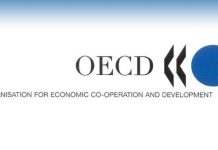By Faridah N Kulumba
Africa-Press-Tanzania The United Republic of Tanzania is an East African country with over 59 million people that is about twice as large as California. The International Monetary Fund (IMF) estimates it to have been the 31st-poorest country globally in 2016 when ranked by per capita gross domestic product (GDP), which stood at $970 in 2016.
The state of the economy
Ranked 163 out of 189 countries on the Human Development Index [HDI] by the United Nations between 1990 and 2019. Although Tanzania’s HDI value increased from 0.368 to 0.529, an increase of 43.8 percent, the country is one of the poorest countries in the world.
Threats
Tanzania is one of the countries in sub-Saharan Africa contributing to more than half of the global maternal and newborn deaths. Every year more than 8,000 women die per day while giving birth or due to complications related to pregnancy. Part of the problem is that less than half of all births take place in a health facility. The health infrastructure has almost collapsed and life expectancy has fallen down. About 1.8m people were estimated to be living with HIV at the end of 2008; thus making the epidemic a major factor impacting the health and opportunities of the general population. AIDS is also a serious threat to the country’s socio-economic development.
Natural resources
The country has substantial natural resource wealth and agricultural potential, however, and multiple socioeconomic development indicators have generally improved in recent years. Its relative political stability and government reforms have attracted substantial official development aid, although there are abiding concerns regarding corruption and a difficult business climate. Despite such challenges, some sectors of the economy, most notably the extractive industries, are attracting private investment.
Tanzania economic ties and tension
U.S.-Tanzanian ties have generally been cordial and U.S. aid expanded significantly under the last two U.S. Administrations. Since the 2015 elections, however, U.S. concerns about Tanzania’s governance have raised some tensions. Such concerns have centered on the nullification of the 2015 election results (and the subsequent rerun in 2016) in the semi-autonomous coastal region of Zanzibar, restrictions on civil liberties, and similar issues. Citing such concerns, in March 2016, the U.S. Millennium Challenge Corporation (MCC) Board announced it would suspend its partnership with Tanzania, deferring a vote on the country’s continued eligibility for a potential second large development compact; this effectively ended, for the time being, the development of a second MCC compact with Tanzania, following its completion of an initial compact between 2008 and 2013. The MCC had previously authorized and helped fund initial research and concept design activities focused on the development of a second compact, which had been expected to center on the electrical power sector—and in mid-2015 had informed Congress of its intent to negotiate such a compact.
Tanzania-China trade relations effects
Tanzanian-Chinese bilateral trade reached a reported $4.67 billion in 2015 but fell to $4 billion in 2016. The balance of this trade varies considerably year to year, but in recent years has grown exponentially in favor of China (e.g., Chinese exports were almost 12 times larger than its imports from Tanzania in 2016). U.S.-Tanzanian trade, in comparison, is much lower, with U.S.-Tanzania trade totaling $278 million in 2015 and $309 million in 2016. Chinese-Tanzanian economic ties have periodically prompted a domestic backlash among Tanzanians negatively affected by Chinese businesses, such as communities displaced during large construction projects or Tanzanian traders hurt by direct competition from Chinese retail rivals.
Funds
The bulk of U.S. development aid for Tanzania in recent years has been provided under Obama Administration’s presidential development initiatives, including Feed the Future (FTF), the Global Health Initiative, the Global Climate Change Initiative, Power Africa, and Trade Africa. In 2014 Tanzania was selected as one of six initial partner countries under the Obama Administration’s African Peacekeeping Rapid Response Partnership (APRRP). It was also chosen to be a Partnership for Growth (PFG) country, one of four worldwide. While most U.S. aid has focused on health and economic growth, bilateral security cooperation has also increased. Tanzania is a top African contributor of personnel to international peacekeeping operations.
Economic challenges under Mgufuli’s administration
During President John Pombe Magufuli’s administration, some of his actions targeted the economy. In early 2017, Magufuli dismissed the head of TANESCO, the national power utility, after it raised electricity prices, a decision that Magufuli later reversed. His action flouted IMF advice to the government regarding efforts to reform and financially stabilize TANESCO, which is burdened by a reported $300 million debt and has sought emergency World Bank loans.
In late 2016, Magufuli alarmed major foreign gold mining companies when he called for Tanzania’s gold to be smelted in Tanzania prior to export. According to a Reuters report, “some foreign investors expressed concern about what they said were unpredictable government policies and actions, while some big mining companies felt they were being unfairly targeted by his administration.
Corruption
Corruption is a long-persistent problem in Tanzania. A 2012 public audit revealed widespread corruption in several ministries and state entities, and six cabinet ministers resigned in connection with the controversy that year. Other scandals have arisen since, including, notably, the illicit diversion by senior government officials of $122 million in central bank funds, ostensibly to pay for energy contracts, to overseas accounts—a finding which led international donors to suspend $490 million in budget support in October 2014 pending an investigation and culminated in the resignation of three government ministers. Tanzania’s ranking in Transparency International’s Corruption Perception Index (CPI) has slipped in recent years (from 100th in 2011 to 116th in 2016, slightly up from its 119th place ranking in 2014).
Refugee Flows
Tanzania has for decades hosted refugees from various conflicts and political crises in the conflict-afflicted and densely inhabited countries in the Great Lakes region of central Africa—some for extended periods—and has played a mediational role in attempts to resolve such crises. In September 2016, Tanzania participated in the Leaders’ Summit on Refugees, an event hosted by then-President Obama and intended to increase shared global efforts to aid refugees worldwide. At the summit, Tanzania agreed to “continue to receive persons running from wars, conflicts, political instability and persecution,” as per its commitments under various international accords, among other related pledges. Observers have nonetheless periodically questioned Tanzania’s commitment to these principles, noting that Tanzanian domestic sensitives over land access and the country’s regional diplomatic ties have sometimes led the government to curtail protections for refugees and asylum seekers, and/or pressure them to return to their countries of origin.
Covid-19 challenges
Growth slowed to 2.1% in 2020 from 6.8% in 2019 because of COVID–19. Growth was driven mainly by construction and manufacturing on the supply side and investments on the demand side. Monetary policy has been accommodative to support credit and economic growth, with a reduction in the policy rate from 7% in August 2018 to 5% in May 2020, where it remains. Inflation fell to 3.3% in 2020 from 3.5% in 2019, due to a steady decline in food prices.
*Effects-* The number of Tanzanians living below the poverty line has increased as the pandemic caused weakness in sectors with high employment potential, notably agriculture and manufacturing. It was estimated that the pandemic could push an additional 500,000 Tanzanians below the poverty line. Inequality is also likely to have widened further during the pandemic.
Debts
Tanzania’s national debt stood at $36.08 billion by the end of November last year, up to $5.34 billion year-on-year from November 2020, according to the latest figures published by the central bank. External debt closed at $27.95 billion, a $215.8 million drop from October which the Bank of Tanzania attributed to debt servicing payments outweighing disbursements during the month. But the debt was still higher by $4.12 billion compared with November 2020.
External debt is considered as the significant source of income for less developed countries, especially the Sub-Saharan African Countries. Tanzania as one of them also relies on external debt to finance its saving-investment gap, budget deficit, and balance of payment deficit. However, the economic impact of debt would feedback into debt levels, primarily by lowering revenue, increasing interest spending, and lowering GDP levels.







